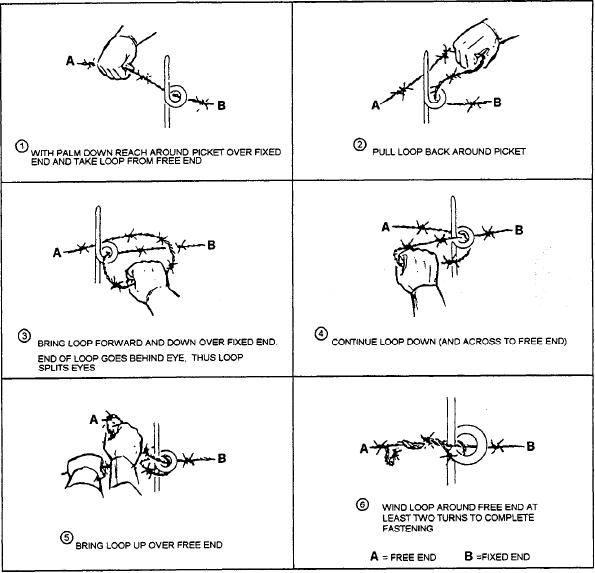
Figure 8-15.--Intermediate-eye tie.
with one continuous movement of the left hand (fig.
3. No working on the enemy side of the fence
8-14), while the right hand exerts a pull on the fixed end
unless absolutely necessary.
of the wire. This is a secure tie, it is quickly made, and
4. Using screw pickets, when available.
it uses only a short piece of wire.
5. Men that are not working should lie down near
the start of work until they can continue their work
Intermediate-Eye Tie
6. Keeping individual weapons nearby at all times.
Use the intermediate tie to fasten standard barbed
wire to eyes other than the top eye in screw pickets.
TIES FOR ASSEMBLING
Make it as shown in figure 8-15. This tie and the other
ENTANGLEMENTS
ties described below require more time to make than the
Wires are tied to pickets by men working from the
top-eye tie, and each uses several inches of wire. In
making the intermediate-eye tie shown in figure 8-15,
friendly side of the wire and picket, stretching the wire
with the right hand as the tie is started. The four ties used
the following points are especially important:
in erecting wire entanglements are shown in figure 8-13.
1. The right hand reaches over the fixed wire and
around the picket with the palm down. The left hand
Top-Eye Tie
holds the fixed end for tension.
2. The loops are removed from the free end and
Use the top-eye tie to fasten standard barbed wire to
wrapped around the picket.
the top eye of the screw pickets. Make the top~eye tie
8-11

